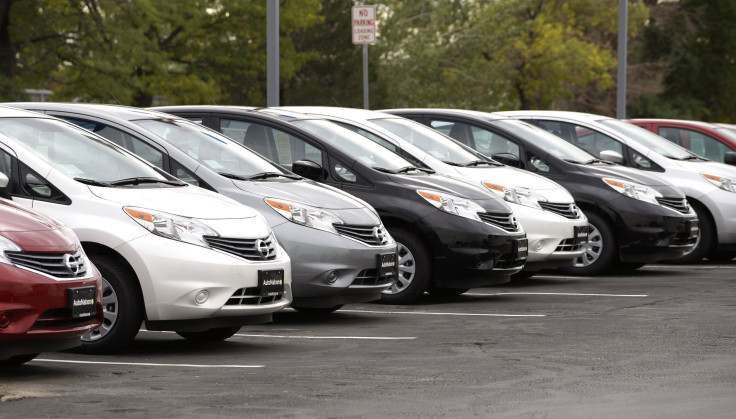October 2014 US New Auto Sales: Up 6% On US Trucks, Foreign Sedans; Ford Down 2%, VW Climbs After A Long Losing Streak

Lower gas prices, longer financing arrangements and increased consumer confidence are pushing American car buyers toward bigger, more expensive cars. Offering fresh evidence of a sustained rebound in the U.S. automotive industry, most major manufacturers saw multi-year highs or all-time highs in sales volume in October, according to figures released by manufacturers on Monday.
“When shoppers are paying less at the pump, they have more money in the bank to save up on big purchases,” Jessica Caldwell, senior autos analyst for automotive pricing and information provider Edmunds.com, said in an email on Monday as automakers revealed U.S. new-auto sales figures for October. “While gas prices certainly breathe extra life into the Tahoes and Range Rovers [SUVs] of the world, the wealth effect is just as likely to motivate shoppers to pull the trigger on [purchasing] all vehicles big and small.”
Automakers reported an 6% percent increase in year-over-year sales in the U.S. last month. The seasonally adjusted annualized rate exceeded the forecast of 16.3 million for October, to about 16.5 million or 1.28 million vehicles for the month. With two months left in 2014, U.S. new-car sales are on pace to hit the highest rate since 2007, the year before the 18-month Great Recession sent the auto market skidding off course. Depending on performance for the last two months of the year, 2014 sales could easily eclipse 2007’s annual sales of 16.1 million. In 2009 that figure touched 10.4 million in the wake of the recession.
“Were continuing to see a lot of strength in trucks and SUVs which is no surprise with where gas prices have gone,” Eric Lyman, specialist in auto resale valuation and information provider at TrueCar Inc. “Also we’re seeing a positive trend of higher transaction prices and lower spending on cash incentives.”
Last month, the ratio of what consumers were willing to pay for new vehicles to how much automakers were offering in incentives (such as rebates) was flat compared to October of last year, and down from September. This means automakers are getting more money for each vehicle they sell compared to last year. The trend should continue next month, before cash incentives will rise during the December sales push in which automakers try to get their annual figures up as much as possible before the end of the year.
One development to watch is the growth in the amount of time consumers have to pay off financed vehicles, which are at historic highs fueled by the country’s low-interest-rate monetary policy. Automakers are offering zero interest for years, which is prodding consumers to buy while rates are low. Rising interest rates, expected as early as next year, could adversely impact sales by 2016.
“Financing has been creeping up steadily,” Alec Gutierrez, senior markets analysts at automotive pricing and industry information provider Kelley Blue Book, said in a conference recall on Monday. “It’s now to about 66 months.”
Volkswagen broke a long-running streak of declining sales last month, when it delivered 8 percent more cars than in October 2013 thanks to the arrival of the new Golf and a rebound in Jetta sedan sales. Nissan benefitted from its new Frontier pickup truck launch and stronger demand for its core sedans, which snatched car-market share away from all of Ford’s cars except the Fusion.
Both Ford and GM did very well in trucks and SUVs, but GM sales overall edged less than a percent while Ford was the only major manufacturer to see a decline as it prepares for the launch of the 2015 F-150 pickup truck, which makes up a third of company auto sales. Japanese automakers took much of the fire out of American automakers’ sedans last month with Honda reporting a 6 percent overall increase, led by an 8 percent jump in its luxury Acura division. The newly designed Honda CR-V helped push deliveries of the model to 30 percent last month. Toyota sales jumped 7 percent thanks in part to the 2015 Camry and a 12 percent rise in Toyota truck sales.
Chrysler was clearly the winner for the month – and the year – as consumers flocked last month to all Jeep and Chrysler brand vehicles.
© Copyright IBTimes 2025. All rights reserved.






















